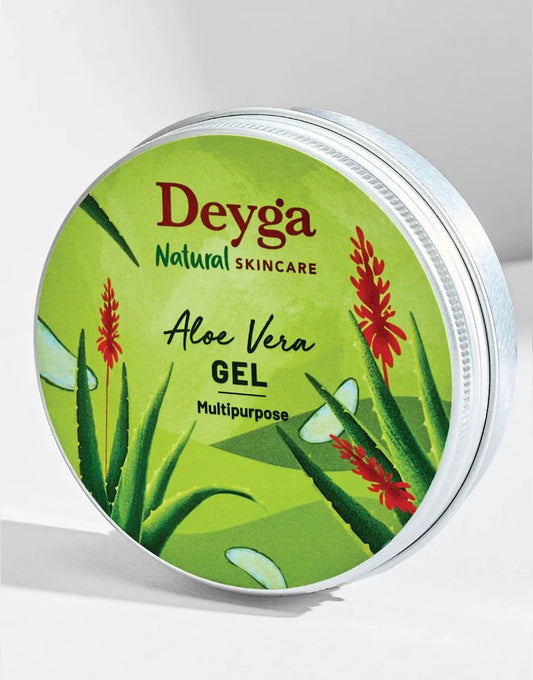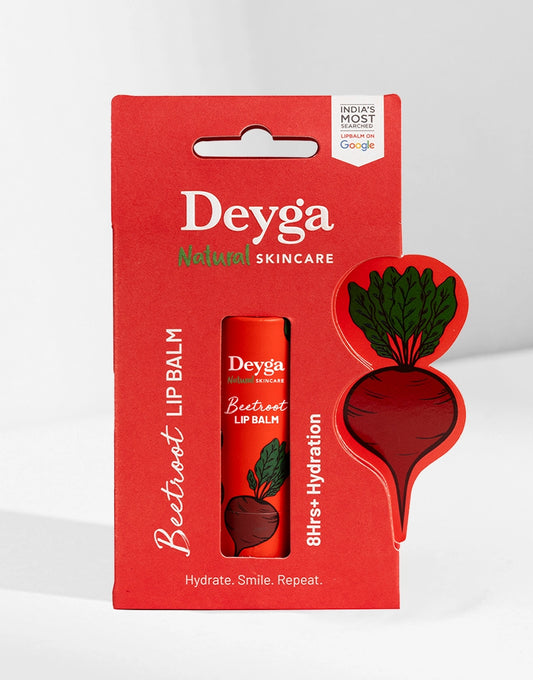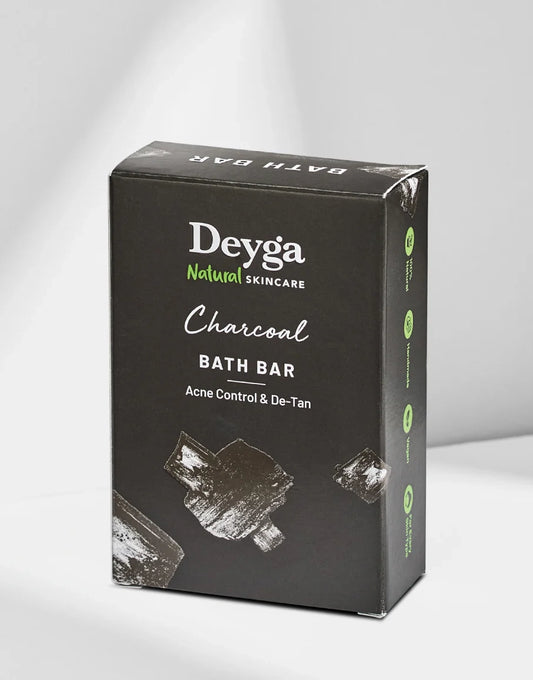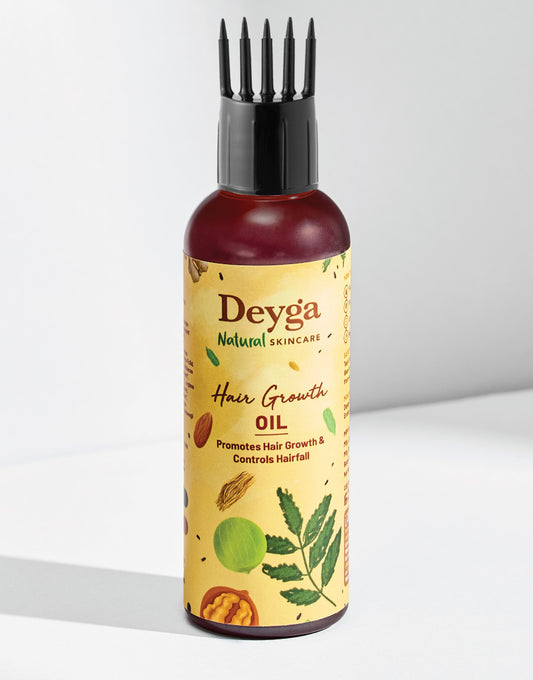Sanitary pads are an essential part of women’s menstrual hygiene all over the world. During the menstrual cycle period, choosing products which give you comfort matters, but more than that the hygiene you follow is even more important.
From picking your first pad on your start of menstrual cycle till your menopause stage, you will get to know everything in detail. Even though there are a lot of products crafted for the menstrual cycle, choosing pads have become a dose of comfort for many people.
Here, in this blog you will know in detail what is sanitary pads, how they get incorporated in your lifestyle, and some of the tips and tricks for a healthy period.
What is Sanitary Pad?
A sanitary pad is nothing but a menstrual pad or napkin, which is used by women during their menstrual cycle. The core purpose of these sanitary pads is to absorb the menstrual blood flow and keep the area dry and comfy for the whole day. They have become a part of girl’s and women’s lifestyle especially while managing periods.
Sanitary pads are generally available in a variety of size, thickness, and different materials too. We can choose them based on the period flow level and preferences. While few people have light flow and in either case, heavy flow also occurs.
Ensure to choose pads according to your needs and level of comfort. Also, ensure to pick bio-degradable pads, since they are safe for environmental hygiene too.
Understanding the Need for Sanitary Pads
When it comes to women’s hygiene, sanitary products play a key role in managing the menstrual period comfortably and safely. Girls use pad not just absorb the blood flow, but also helps in preventing skin infections, irritations, and allergies. Even though the menstrual hygiene awareness is all over, it is even more vital to know about all these in rural and urban villages.
Importance and Usage Statistics
In a general survey of India, the use of sanitary pads have been increased significantly. Around 64.5% of adolescent girls and women have incorporated sanitary pads during the menstrual cycle, which is a kind of major improvement compared to previous couple of years. But, in rural areas, the percentage is around 42% only, where the other 58% use cloth pads due to various aspects like price, lack of awareness, and limited access.
Also one more common thing which goes around is that sanitary pad cause cancer. But, it’s a No. When you pick the right one, they don't.
Even though the percentage overall has been increased, there is still education and awareness needed especially in rural areas. This helps in making a change among women and girls in rural areas to make their menstrual cycle comfortable and safe.
The Science Behind How a Sanitary Pad Works
Sanitary pads have been used from the early centuries but not in a much convenient and comfortable aspect. In the initial days, women used rags, sheep wool, clothes, and even other natural absorbing material to manage during their period flow.
The first disposable sanitary pads were discovered by the nurses, for women who entered the battlefield. In France, they were made from pulp bandages in the wood. They have better absorbent capacity, and are easy to dispose of post usage.
The commercial manufacturers used this idea and launched pads for selling in 1888. Later, Johnson and Johnson developed their own version - Sanitary Towel for Ladies.
Over the years, pads have evolved to meet the needs of modern women. At present, the sanitary pads are designed with comfort, flexibility, and considering better protection. The materials and designs are made considering the softness and breathability while wearing them!
The evolution of sanitary pads from simple cloths to a unique range of hygiene products, considering design and comfort for women to be comfortable and confident during the menstrual cycle.
Sanitary Pad Layers - In Detail
Understanding women's pad sizes is key, and there are quite a few layers in the pad, which helps in protecting you from leaks and spotting in clothes:
-
The top layer is soft and breathable; Helps in passing the fluid while being gentle on the skin.
-
The middle layer, which is the absorbing layer tends to lock the moisture without causing any leaks or spots in clothes. This is one of the important parts to prevent skin irritation.
-
The bottom layer is a waterproof layer which prevents spotting in clothes.
The layers will tend to have advanced materials like SAP and even plastic to hold the fluid weight. They not just help in absorbing the flow but also helps in reducing the odours and prevents bacterial growth.
The adhesive strips on the back of the pad helps in securing them in one place without movement to prevent leakage or shifting.
Types of Sanitary Pads
Here is a simple guide on the types of sanitary pads available in the marker, and how they can be incorporated during the menstrual flow days.
|
Type of Pad |
Flow/Use |
Key Features |
Ideal For |
|
Regular Pads |
Can be used during light to moderate flow |
Works as a basic protector and gives you comfort. |
Used by Daytime |
|
Heavy Flow Pads |
Heavy flow |
Longer and super-absorbing. |
Can be used overnight or during heavy flow days. |
|
Panty Liners |
Very light |
Thin |
Spotting, daily discharge, and perfect for post-period routine. |
|
Cotton Pads |
Light to Moderate flow |
Soft, Breathable, and Gentle on skin |
Suits sensitive skin folks. |
|
Biodegradable/Organic Pads |
Light to Heavy flow |
Made from natural fibers, eco-friendly |
Environment-conscious users |
|
Ultra-Thin Pads |
Light to moderate |
Flexible, lightweight |
Active users, discreet protection |
|
Maternity Pads |
Heavy (postpartum) |
Extra-absorbent, comfortable |
Postpartum bleeding |
Hoping the most common confusion in choosing between the sanitary pads vs panty liners is solved! The above sleek details will show you in detail!
Choosing the Best Sanitary Pad for Your Body and Flow
Every woman has unique periods. For few, flow will be less and in other cases, the flow seems to be heavy. Choosing the right type of pad is important since they should match your body type and menstrual flow!
When you are choosing a sanitary pad, the first important thing to analyse is the period flow. For lighter flow, go with small pads or ultra thin pads, which makes you comfortable and keeps the area breathable. Choosing sanitary pads on heavy flow days might be traumatic;
But the extra large pads with better absorbing capacity helps! If you have sensitive skin, choose cotton pads or bio-degradable pads. They are considerably safe and will have less to no irritation and allergies.
Ultimately, the best period pads are ones which keep you dry, comfortable, and confident throughout your menstrual cycle. You can initially try different versions of menstrual products to discover which pad is best for your periods and lifestyle.
Top Choices for Heavy Flow Protection
When it comes to period flow, “CHOOSING THE BEST PAD” seem to be challenging especially during the initial stages. In that case, make sure to track and check how period flow is. Getting your hands on the right pad will make a drastic change especially during the hard or painful menstrual days.
Choose pads based on your period flow, since only the right pad for heavy flow can help in making your period days comfortable.
During the heavy period flow days, picking multi-layered pads with better absorbing capacity is important. This helps in preventing period leaks or spotting in clothes.
When you have sensitive skin, choosing a cotton sanitary pad or bio-degradable sanitary pad is a safer choice. These help in preventing the irritation or allergies caused especially when used for a longer time period.
Comparison Table: Sanitary Pads vs Other Menstrual Products
Wondering how the “MENSTRUAL CUPS VS PADS”, and others vary between each other? Here, you will get to know in detail:
|
Criteria |
Pads (Sanitary Pads) |
Tampons |
Menstrual Cups |
Panty Liners |
Cloth Pads |
Period Underwear |
|
Ease of Use |
Very easy, beginner-friendly |
Needs practice, insertion required |
Insertion + sterilization required |
Very easy but only for light use |
Needs washing/drying |
Easy but requires full underwear change |
|
Safety |
No risk, safer |
Risk of Toxic Shock Syndrome if not changed |
Safe if cleaned well, otherwise infection risk |
Safe, but low absorbency |
Infection risk if not dried properly |
Safe but absorbency varies |
|
Hygiene |
Disposable, quick change |
Must change every 4–6 hrs |
Needs boiling/sterilization |
For freshness only |
Requires proper wash & sun-dry |
Needs frequent washing |
|
Absorbency |
Wide range: light, regular, heavy, overnight |
Good but limited by size |
High (8–10 hrs capacity) |
Minimal, not for heavy flow |
Moderate, not always reliable |
Moderate depending on brand |
|
Comfort & Movement |
Comfortable, wings prevent shifting |
Allows movement but may cause dryness |
Allows full movement if fitted well |
Comfortable, but not for periods |
Can feel bulky |
Comfortable but not always leak-proof |
|
Overnight Use |
Overnight pads give full leak protection |
Not recommended beyond 6–8 hrs |
Not recommended for overnight |
Not suitable |
Not reliable for overnight |
Limited hours only |
|
Convenience |
No prep, easy to carry |
Needs to carry + insert |
Needs privacy + clean water to wash |
Handy, but for light days |
Not travel-friendly |
Expensive + needs washing |
|
Accessibility |
Available everywhere (urban & rural) |
Limited availability in rural areas |
Limited availability |
Easily available |
Available but not mainstream |
Rare, expensive |
|
Cost |
Affordable, multiple sizes |
Moderate cost |
One-time cost but expensive upfront |
Cheapest |
Cheapest but labor-intensive |
Very expensive |
|
Environmental Impact |
Disposable, creates waste (biodegradable options improving) |
Less waste than pads |
Eco-friendly, reusable |
Less waste |
Eco-friendly |
Eco-friendly but high water use |
|
Privacy Factor |
Easy to change even in public toilets |
Requires insertion, less privacy |
Needs private clean space |
Quick change |
Needs washing area |
Needs changing + washing |
|
Best For |
All women, all flows, all settings |
Experienced users |
Eco-conscious & comfortable with insertion |
Spotting/discharge |
Eco-conscious at home |
At home or light-flow users |
When comparing the different aspects, considering safety, comfort, and beginner-friendly guide is vital to make the period cycle comfortable and healthy. You will find a huge range of options in pads available, while you can pick the one which is best considering your body type and blood flow.
From the above tabular column, choosing a sanitary pad is a safe option compared to other menstrual products. You will find a huge range of sizes and materials available. Choose the one which suits you better during this phase.
Rash Free Pads: Common Problems Women Face
Though sanitary pads are a saviour to the majority of people during the menstrual phase, some people feel discomfort and skin irritation while using them. Getting frequent pad rashes in the inner thighs and vaginal area is mainly because of friction, materials used in pads, and lack of moisture.
Another common concern of people using sanitary pads are itchiness and redness in the vaginal area. This is because of various concerns like fragrance, dyes, and even the presence of chemicals in them! Especially people with sensitive skin have this concern, which may also add-on with the burns or burning sensation post pad usage.
The above issues are mainly because of the material used in the pad. They seem to be non-breathable, and are causing skin issues like itching, redness, and even rashes in the skin. Switching to bio-degradable and rash-free pads that are made of natural fibres work better and get better with the skin.
Preventing Pad Rashes: Easy Hygiene Habits
-
Make sure to change your pad every 3 to 4hrs, or when it's wet. This helps in preventing moisture build-up and bacterial growth.
-
Choose cotton pads, or other safe sanitary pads to use that tend to be soft and gentle on the skin.
-
Never opt for sanitary pads with fragrances in them. This causes irritation in the skin when used continuously.
-
Ensure to pick skin friendly materials like cotton, especially for your innerwears. This helps in better airflow and avoids skin friction.
-
Wash your intimate area with plain warm water. Avoid using scented soap, alcohol based wipes, or hot waters.
-
Dispose the pads by wrapping and placing them in sanitary bags. This is for personal and environmental hygiene purposes.
-
Avoid alcohol-based wipes or harsh cleansers that can dry out or irritate the skin.
Beginner’s Guide to Using a Pad
If you have started your period, choosing and using the right menstrual product can be confusing. But menstrual pads will be your saviour since they are easy to use and dispose at the same time.
Here is a simple beginner guide to use sanitary pad:
-
Remove the pad from its packaging; Most pads come folded wrapped, which can be used later while disposing carefully.
-
Peel the strip and stick them in your underwear. Make sure to seal them like the wider part should go at the end for better coverage.
-
Now, the most important step - which is to seal the wings behind the sides of your underwear. This helps in holding your pad firmly in one place.
-
If you feel wetness in your pad or it’s been more than 4 - 5hours, make sure to change the pads regularly.
-
Last but not the least, it's crucial to know how to dispose of sanitary pads properly. Make sure to wrap them in a disposable bag and throw them in a closed bin. This is for both physical and environmental hygiene.
Initially using menstrual products may be quite challenging, but with regular practice, you will be used to it. Also while using menstrual pads, check and get your hands on the right pad size based on your flow.
Menstrual Pad Size Guide - Tips
Here is a simple tabular column to pick the right pad size based on your period flow during menstrual cycle:
|
Pad Size / Type |
Approx. Length |
Flow Level |
Key Features |
Ideal For |
|
Panty Liners |
15–17 cm |
Very light |
Thin, flexible, no bulk |
Daily discharge, spotting, post-period days |
|
Teen / First Pads |
17–19 cm |
Light |
Soft, compact, skin-friendly |
Young girls, beginners |
|
Small / Regular Pads |
17–20 cm |
Light to moderate |
Basic absorbency, some with wings |
Daytime use, short hours |
|
Medium Pads |
21–24 cm |
Moderate |
Balanced size, good comfort |
Daytime use, average flow |
|
Large Pads |
25–29 cm |
Heavy |
Longer, wider, more absorbent |
Office hours, travel, sitting long periods |
|
Night Pads |
28–35 cm |
Heavy |
Wider back, leak guard |
Overnight sleep protection |
|
XL / XXL Pads |
30–35+ cm |
Heavy to very heavy |
Extended coverage, hip guard |
Heavy flow, long travel, postpartum |
|
Maternity Pads |
32–40 cm |
Very heavy (postpartum) |
Extra-absorbent, cushioned |
New mothers, postpartum bleeding |
|
Wing Pads |
Varies |
All flows |
Flaps wrap underwear, prevent shifting |
Active users, heavy flow days |
|
Non-Wing Pads |
Varies |
Light |
Simple, cheaper, easy to dispose |
Light flow, home use |
Healthy Periods with Biodegradable Pads
Women now opt for sustainable products especially in menstrual products. This is because a lot of conventional pads seem to have plastic layers and fragrances, which take years to break down.
Choosing bio-degradable pads helps in decomposing easily and also a safe option for mother nature. They are gentle in terms of both physical and environmental terms. People with sensitive skin have less to zero chances of irritation or redness, since they are breathable.
Period Hygiene Tips Every Woman Should Know
Good hygiene is mandatory especially during the menstrual cycle. Following certain hygienic steps helps in prevention of various skin infections. Some of the simple hygiene tips include:
-
Change your pad every 3 hrs or within 4hrs. This will prevent skin infections and odour.
-
While changing pads, wash the intimate area well with warm water. Do not use hot water and soaps.
-
While picking underwear choose loose, skin-friendly underwear. Cotton is the best choice.
-
After usage, wrap them and put them in a disposable bag. Place them in a closed bin and wrap them in disposable bags.
-
Because of dryness, it is important to hydrate internally. Drink enough water especially during your menstrual cycle.
-
Over health and well-being also plays a vital role in a healthy menstrual cycle.
Finding the Right Brand for Your Period Needs
With so many menstrual product brands available, it is really a tedious task to choose one. But considering your body type and the blood flow, choose one which is unique and suits you while making you comfortable.
From the above aspect, the best sanitary pad can be chosen effectively. Here are the things to consider while picking a right brand for your menstrual cycle includes:
-
Rash-free pads
-
Skin-friendly materials
-
Better absorption
-
Avoid chemicals indulgents
-
Opt for sustainability
Conclusion
Understand your body and pick the right product during your menstrual cycle. This helps in making a huge difference especially during your initial period phase. From picking the right product to disposing of them, and maintaining proper hygiene, everything matters for a healthy menstrual routine.
Focus more on prioritizing the health like rash-free, bio-degradable, and skin friendly pads which benefits both skin and planet. Deyga Organics is one such brand which makes a change especially in these menstrual cycles that offers comfort, safety, and sustainability.
FAQs:
Why should I use a sanitary pad instead of cloth or rag?
Sanitary pads are made in a way which is designed for hygiene and comfort. Other than cloth pads or rags, these menstrual pads help in better absorbency, prevent leakage and reduce infections.
Is it safe to wear a pad all night?
Yes, pads are safe to be used overnight. Choosing XL or XXL pads which are extra large helps in absorbing better and avoids leakage.
Do pads expire or degrade over time?
Yes, generally the pads' lifespan is around 2years only. But when you store them in a cool and dry place, and away from sunlight.
Are scented pads harmful?
Yes, they may irritate skin, especially people with sensitive skin. Fragrances tend to disturb the natural PH level in the skin.
How many pads should a girl or woman keep in stock for a typical month?
For a month, you will get period flow in 2 to 5 days. So, if we take 4 pad/day, 20 pads for a month will be sufficient. Always ensure to have back-up for being on the safer side.
 Track My Order
Track My Order












